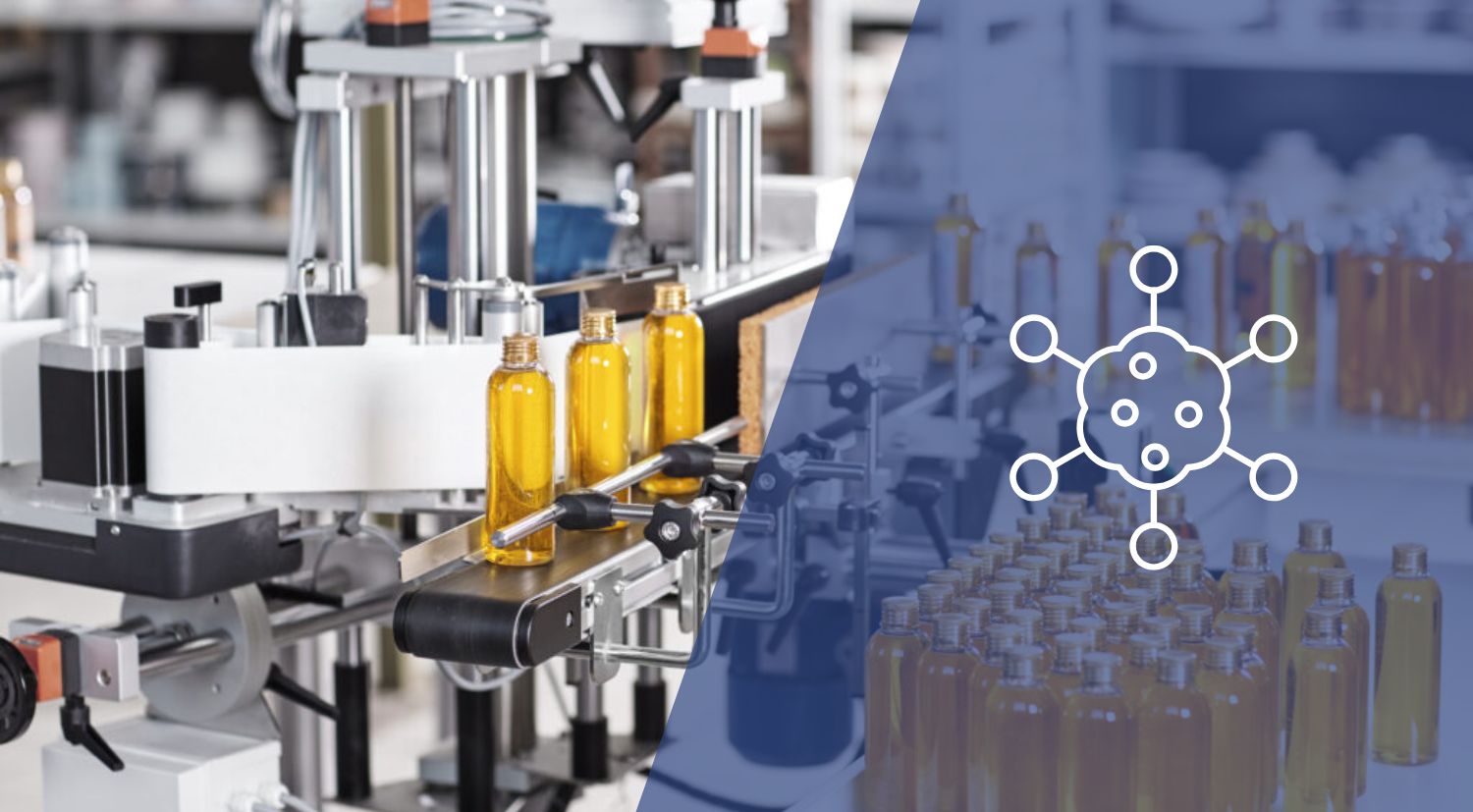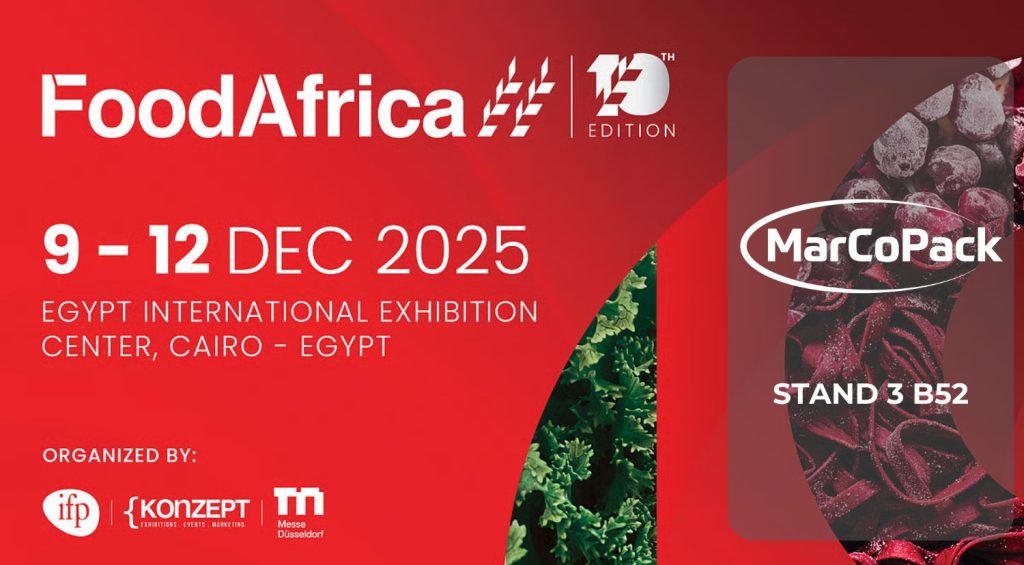How to adapt packaging, labels and production lines in the cosmetics industry to the 2026 regulatory changes, including ingredients, traceability and new environmental requirements.
The cosmetics industry is facing a new regulatory milestone. With a series of
For cosmetic companies, this means that it is no longer enough to develop good formulations: it is imperative that the entire ecosystem – packaging design, packaging machinery, labeling, traceability – is aligned with the new requirements. And in this context, machinery and packaging manufacturers have a crucial strategic role to play: they enable their customers to adapt in advance, ensure operational continuity, avoid compliance risks and turn compliance into competitive advantage.
In this article we will review: the regulatory landscape, the specific impacts affecting packaging and labeling, how machinery and production must be adapted so that your cosmetics industry is ready for 2026. In addition, we will see how MarCoPack can accompany you with technical solutions for machinery and automation with maximum flexibility.
Our goal is that, by the end of this article, you will have a practical roadmap for preparing your production, packaging and labeling, avoiding disruptions and turning compliance into a driver of efficiency and competitiveness.
1. Current regulatory landscape and what changes towards 2026
Basic regulatory framework
The European regulations governing cosmetic products are mainly set out in the Regulation (EC) No. 1223/2009which establishes requirements on safety, labeling, formulation, notification to the CPNP, among others.
This regulation regulates key aspects: colorants (Annex IV), preservatives (Annex V), UV filters (Annex VI), and also provisions related to nanomaterials.
Key changes for 2026
Although changes have already been implemented in 2024-2025, the 2026 horizon marks a major step forward in adaptability for the cosmetics sector:
- Restrictions on nanomaterials: For example, Regulation (EU) 2024/858 of the Regulation (EU) 2024/858 which amends the Cosmetics Regulation to prohibit or restrict certain nanomaterials (such as gold, platinum, colloidal silver, colloidal copper) from 1 February 2025 for placement on the market, and 1 November 2025 for availability.
- UV filters and other active ingredients: The revision of Annex VI contemplates changes in authorized UV filters and conditions of use, with direct impact on sunscreen sunscreen products and cosmetics.
- Preservatives and other restricted or prohibited ingredients: For example, addition of new CMR substances (carcinogenic, mutagenic or toxic for reproduction) to Annex II, modifications to Annexes III, IV and V. The Regulation (EU) 2025/877 adds 21 CMR substances to the prohibited list.
- Labeling and transparency: Requirements on nanomaterials (“nano” in parentheses after the name), allergens to be declared and traceability are strengthened.
- Legislative adaptation: The European Commission, through the “Chemicals Package”, also revises the simplification of regulations while maintaining the requirement for compliance.
- Complementary national measures: For example, in France, a regulation was adopted which, as of January 1, 2026, prohibits the manufacture, marketing, import and export of cosmetic products containing PFASs.
- Sustainability and packaging: environmental regulations on packaging that apply to the cosmetics sector (see section 3.3).
Although not all the changes have the same urgency or impact, all of them imply that the production, packaging and labeling chain must be thoroughly reviewed.
2. Implications for cosmetic packaging
Why should packaging be adapted?
- Compatibility with new formulations: Reformulations that substitute nanomaterials, filters or preservatives may require new packaging materials.
- Updated labeling: Packaging must include labels declaring ingredients, nanomaterials, allergens and traceability.
- More varied production: Brands offer “nanomaterial-free”, “PFAS-free”, etc. versions, which requires flexible packaging lines.
- Export and compliance: Packaging must comply with national and international regulations, and the packaging is part of the marketable product.
Packaging materials: key points
The regulatory change on nanomaterials means that both ingredients and packaging must be reviewed. For example, if a package contains nano particles or the formulation does, it is declared “(nano)”.
In addition, the cosmetic industry must ensure that the packaging does not interact negatively with the new formulation and that it allows for a smooth labeling update.
Labeling on containers/packaging: requirements
- Updated ingredient list, suffixed with “(nano)” when applicable.
- Allergen declaration and specific warnings according to UV filters or preservatives.
- Label to facilitate multilingualism, frequent version or batch changes.
- Coding systems, artificial vision, variable printing to ensure traceability and correct labeling by variant.
Packaging line flexibility: small batches, multiple variants
The proliferation of product variants requires more agile packaging lines: quick format changeover, multi-language labeling, multiple sizes, customized batches. Traditional high-volume machines can fall short.
Technical adaptation with MarCoPack
At MarCoPack we offer:
- Audit of the packaging and labeling line to detect bottlenecks.
- Modular machine design: adaptability to multiple sizes and materials.
- Intelligent variable labeling/coding solutions: multi-language printing, automated verification.
- Compatibility with “future” materials (sustainable packaging, recycled materials) to meet environmental regulations that also apply to the industry.
With these solutions, you can turn compliance into an asset: more efficient lines, compliant packaging and streamlined operation.
3. Implementation stages and key deadlines (towards 2026)
Indicative schedule
| Approximate date | Regulatory milestone | Priority action for the cosmetics industry |
|---|---|---|
| February 1, 2025 | Ban on certain nanomaterials for placing on the EU market | Review formulations and packaging containing nanomaterials |
| November 1, 2025 | Limited availability of these products in the EU market | Manage inventory, adapt production, updated labeling |
| 1 January 2026 (and onwards) | Packaging obligations – marking, RAP, circular economy (see RD 1055/2022) | Ensuring packaging complies with marking, materials and traceability |
| Continuous | Revisions of UV filters, preservatives, multilingual labeling | Revise ingredient catalog, packaging, labeling |
What to do next (diagnostic/preparation phase)
- Complete audit of formulas, packaging, labeling, packaging machinery.
- Map the supply chain and ensure that all actors (ingredients/packaging/machinery) are aware of the new requirements.
- Classify products by regulatory risk.
- Plan packaging/labeling/machinery line modifications with MarCoPack if necessary.
- Maintain a regulatory oversight system.
Inclusion of the Royal Decree 1055/2022 for packaging and its impact
The Royal Decree 1055/2022of December 27, on packaging and packaging waste, aims to establish the legal regime applicable to all commercial and industrial packaging, including those in the cosmetics sector.
Among the most relevant obligations for the cosmetics industry are:
- Packaging design for reduction and reuse, improved recyclability.
- Marking of the container: indicate collection fraction or container to which it should be sent, reusable symbol, type of material.
- Register of “packaging producers” that place their products on the Spanish market, with the obligation to register volumes, materials and waste.
Therefore, as a cosmetic company, you should review your packaging not only from a functional and aesthetic point of view, but also from an environmental compliance point of view: marking, material, package traceability.
The integration of this environmental regulation means that the end date for production with non-compliant packaging should be considered as early as 2025-2026, so it should be part of your roadmap along with formulation changes.
MarCoPack can help you to adapt packaging and labeling machinery so that the packaging complies with these requirements (for example, printing the collection symbol, the appropriate container, adapting recycled materials, etc.).
Recommendations for action by the cosmetics industry
Recommendations for concrete action to adapt to current regulatory changes:
- Immediate audit of packaging/labeling plant: formats, changeover times, current labeling, materials.
- Mapping formulations and packaging against 2026 regulatory compliance: ingredients, filters, nanomaterials, environmental packaging.
- Design the packaging and labeling machinery adaptation plan: milestones, responsible parties, investment, schedule.
- Invest in flexible machinery and smart labeling: quick format changeover, multi-language labeling, advanced coding. MarCoPack can help you with modular, pre-validated, quick changeover solutions.
- Optimize packaging and materials: ensure that packaging is compatible with new formulations, marking according to RD 1055/2022, updated labeling.
- Train human resources and ensure traceability: personnel trained in format change, labeling, traceability, quality. Implement batch tracking software, coding, automatic verification.
- Communicate to the market: use compliance as a value argument (“2026-ready line”, “compliant packaging”, “transparent labeling”).
- Monitor new regulations: regulation does not stop in 2026. Keep abreast of new requirements for digital labeling, sustainable packaging, circular economy.
At MarCoPack we understand that the cosmetic regulatory environment can seem like a challenge… but also an opportunity to strengthen your production capacity, your flexibility and your market positioning. If you want to:
- Evaluate your packaging/labeling line and know how ready it is for 2026,
- Adapt your machinery for quick format changeover, multi-language labeling and advanced traceability,
- Introduce packaging compatible with new formulations and recyclability requirements,
- Turn your compliance into a marketing and export asset,
… Contact us, and our team at MarCoPack will offer you an initial audit and a customized adaptation plan.

Alejandro Serrano Romero
Export Executive MARCOPACK





